- When a pest is damaging your cannabis plants, you do not necessarily have to use pesticides to kill off your unwanted guests.
- Some growers use insects themselves to combat others, in this way eradicating the infestation in a completely natural way.
- There are predatory species, such as ladybugs, that help protect plants without the use of chemicals, thereby preventing damage to both your marijuana and the environment.

Pests are one of the hazards that cannabis crops face, and there are various ways to deal with them. The best-known solution is pesticides, but they are so widely used by farmers that some insects are impervious to the chemicals. Their use can also affect the quality of plants. An alternative and environmentally friendly approach is to opt for biological control; i.e., using insects to attack and eat other insects.
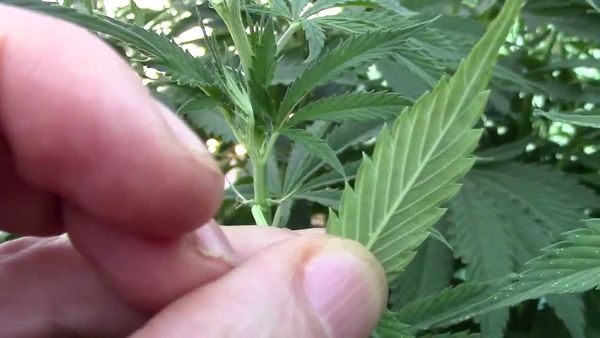
Some growers use different species of predators to kill pests, a system that can also be applied to cannabis cultivation, representing a natural remedy that obviates the use of synthetic products, and is easy to do. There are many species that may endanger crops, such as aphids, thrips and spider mites, and every type of insect attacks a different species. So, before selecting your insects you must be sure you know what kind of pest is attacking your crop, so as to employ their best enemy.
This biological practice is widespread amongst farmers, such that these insects can be purchased at specialised stores. The method has actually been around for a long time. As many gardeners know, ladybugs, for example, are very useful to get rid of aphids, or plant lice.
There are other insects that can be very beneficial for crops too, but growers are often more leery of using them because they are not as well known, such as parasitic wasps. But there is no reason to panic. In fact, these insects can be very helpful for your cannabis plants.
Ladybugs
These animals are very popular for the control of unwanted insects because they are easy to find at nurseries. They feed on common pests that can affect cannabis crops, such as aphids and mites, and will also feed on cochineal and small caterpillars.
Although they are very easy to get, you need to be sure to create an environment that they like, so that they do not go wandering off. When you first release them, do so at night when it is cooler, and sprinkle some water on your plants for them to drink. To make them feel right at home, sow other plants that they can use for shelter, and with pollen and nectar that favour their reproduction. We recommend planting cilantro, dill or fennel, these being their favourites.
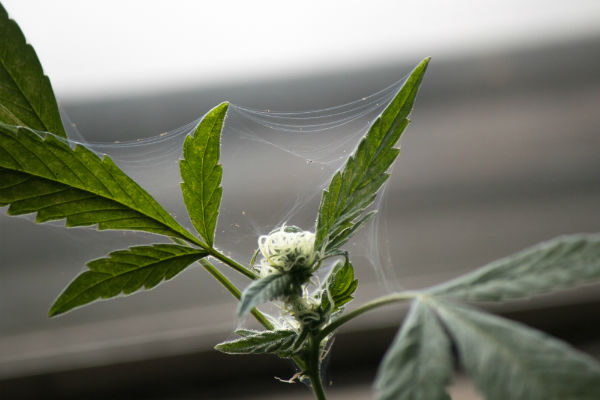
Mites
There are voracious predatory mites that can actually help you eliminate pests. Phytoseiulus is one of the most used. It feeds on spider mites (which it resembles: both are bright red) and their larvae and eggs. If you release the species in your garden it will gradually inhabit your plants and fulfil its function: basically, to eat.
Just letting them go, however, is not enough. You will need to keep humidity levels over 40% for them to survive. Your care and efforts will prove worthwhile, as they can eat up five red spiders, or 20 eggs and larvae, daily.
Another mite you can use to fight pests is the Amblyseius californicus, which also feeds on spider mites. This almost transparent species, unlike the previous one, does not require high humidity, and also withstands high temperatures, making it very useful for indoor growing, or outside in the summer. However, they are insufficient when dealing with large infestations, because they are not as voracious. Rather, they are a good choice when pests are just appearing and your problem is still small.
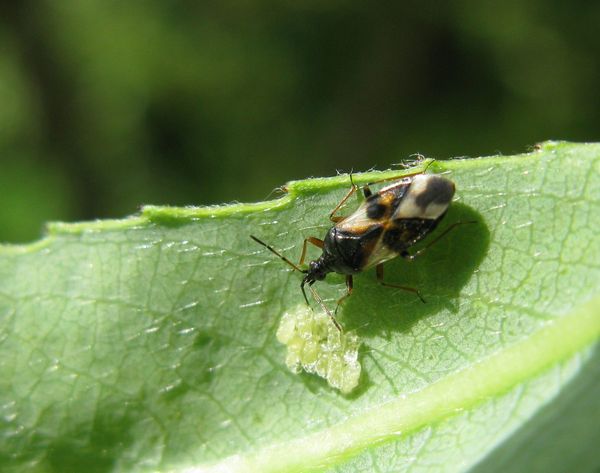
Anthocoridae
Anthocoridae, also known as pirate bugs, are often found on and around crops, and can constitute a great resource for growers. These are predators that feed on other insects, some of them harmful to cannabis crops, such as spider mites, insect eggs and several species of small caterpillars.
Despite feeding on these bugs, their diet is mainly composed of pollen and the juices of some plants. So, to lure these animals to your crops, we recommend shrubs with large flowers.
Lacewings
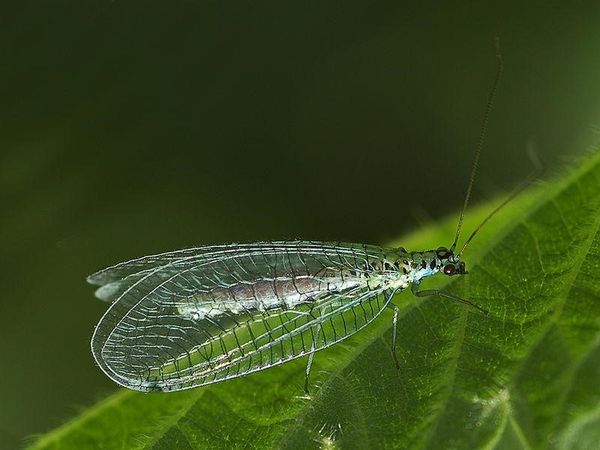
Chrysopidae, or lacewings, are particularly ravenous. Even when they are still larvae they are prolific eaters of pests, able to eat up to 60 whiteflies, aphids and spider mites per hour. They can remain in this state for up to three weeks before becoming adults, and when hunting they inject their prey with a paralysing poison.
In order to get adults to feed and reproduce again, it is a good idea to plant nectar-rich flowers. We also recommend releasing lacewings early in the morning or evening, when the atmosphere and temperature are milder.
Parasitic wasps
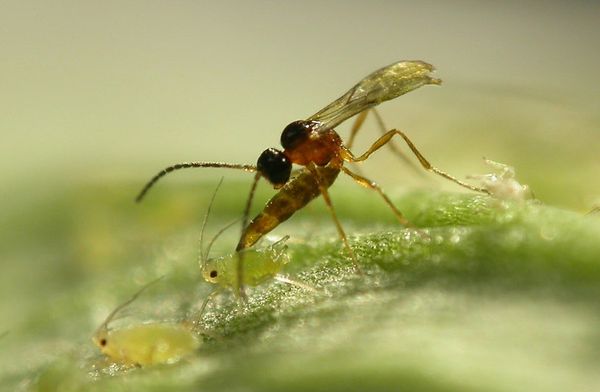
The aphidius colemani is a natural enemy of aphids. This tiny wasp (measuring just 3 to 4 mm long) searches leaves for signs indicating that they are infected. When they find them they lay their eggs inside the aphids themselves, which serve as food and shelter for future larvae. When an aphid is attacked by this species and survives it emits an emergency warning pheromone urging others to stay away from the area. In this way it can ward aphids away from your crops.
But this is not the only little wasp that you can buy to get rid of the bugs that are damaging your plants. Trichogramma, also known as stingless wasps, also lay their eggs in the "enemy," but in this case in their eggs, such that it prevents the reproduction of insects until they disappear. Among the species they tend to eat are all kinds of worms, including the hornworm and the bagworm. To use them you will need to release them in your crops and entice them with flowers like dandelion, dill, cilantro or yarrow.
Syrphids
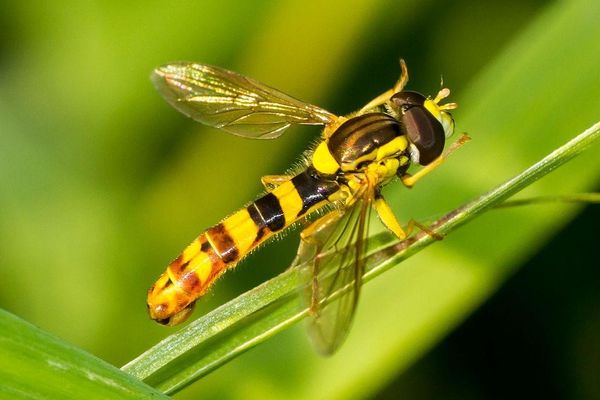
It is common to mistake syrphids, or hoverflies, for bees, but these are actually different animals that roam gardens and orchards to search for aphids and other soft-bodied insects, such as mites, thrips and mealybugs. They are also harmless to people, making them ideal for biological control in agriculture. A simple way to distinguish this species from bees and wasps is to focus on their eyes, which are much larger.
Larvae are those that feed on these species; when they grow, they only eat nectar and pollen, and they become pollinators, shedding their role as predators. Nevertheless, this insect is a good way to deal with infestations because with every reproduction they are more likely to eliminate the pests.
Spiders
Spiders constitute a very special creature in plantations and gardens, as they devour all kinds of insects. There are many kinds of these animals, but the essential thing is to be sure that they are hunting, or predatory species, as these will be the ones capable of reducing the number of insects on your plants. Many of them feed on species that tend to damage cannabis plants, such as the aforementioned mites and thrips, but also others, such as cucumber beetles, which can do major damage to plants.
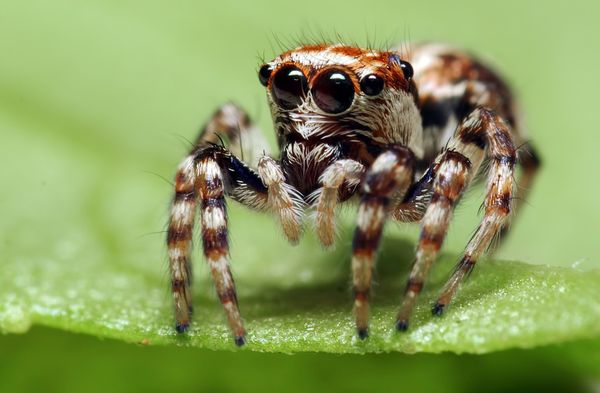
To attract arachnids it is best to plant flowers. But beware: do not confuse spiders with the "red spider," which is actually a kind of mite, and can become a real pest for your crops.
Once you have identified the insects that are damaging your cannabis plants, you can choose the best insects to go after them. Sometimes you can combine pesticides with this biological method –but be sure to use them previously, to keep from killing the insects that are supposed to fight your pests. This is not usually necessary, however, as natural systems can keep your crops in good shape, without resorting to chemicals that can affect the quality of your plants. Equipped with all these tips, you can get started on ensuring that your crops are safe from unwanted visitors.



Comments from our readers
Read comments in other languages:
Did you like this post?
Your opinion about our seeds is very important to us and can help other users a lot (your email address won't be made public).